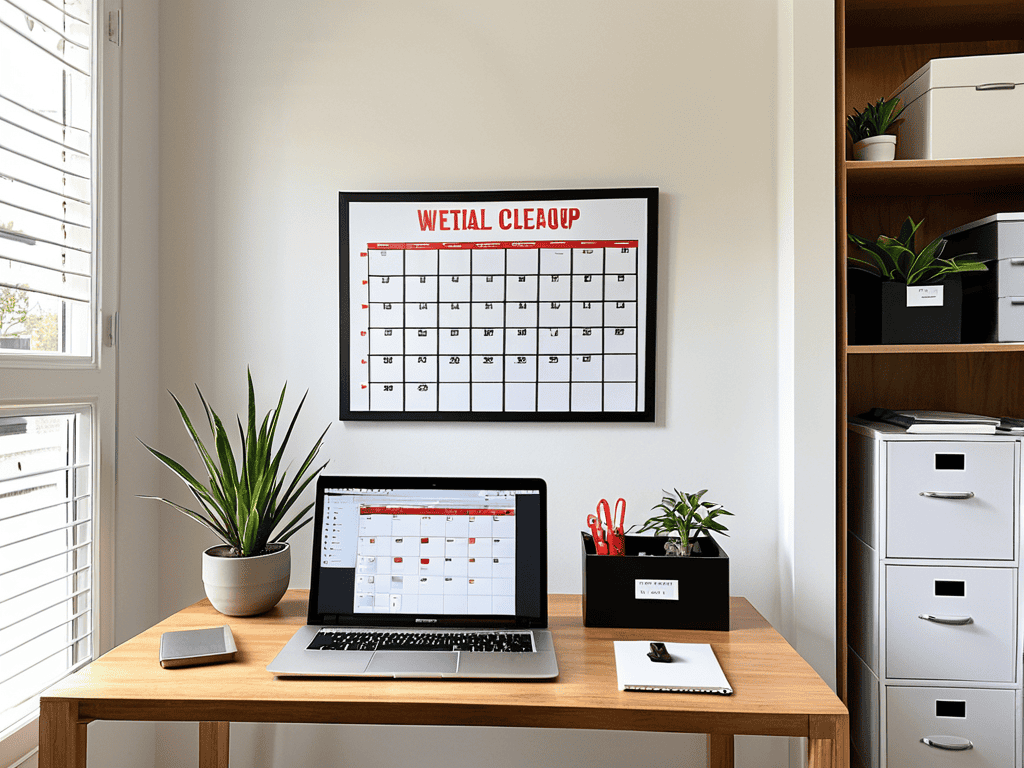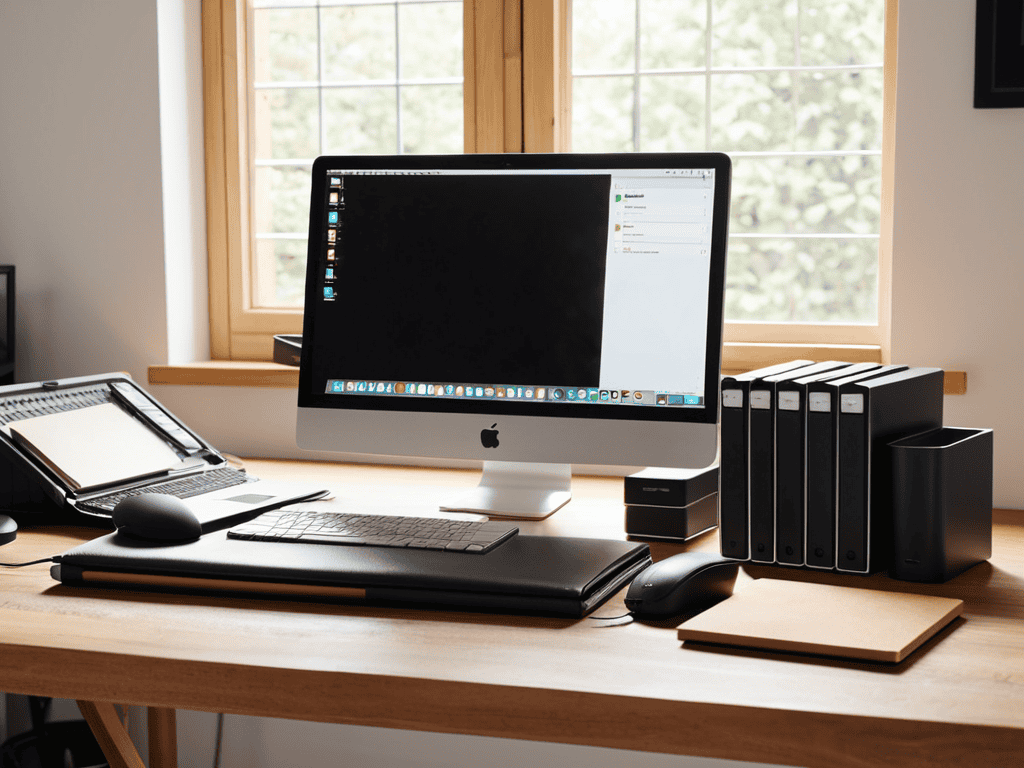I still remember the day I realized my digital life was a disaster – I was searching for a critical document for hours, only to find it buried under a pile of random files and folders. It was then that I understood the importance of how to organize your digital files for a clutter-free life. The common myth is that achieving this state of digital zen requires a lot of time and effort, but I’ve found that it’s actually about creating simple, sustainable habits. For instance, setting up a basic folder structure can make a huge difference in reducing digital clutter.
In this article, I’ll share my personal, no-nonsense approach to digital file organization, which has been a game-changer for my productivity. You’ll learn practical tips and tricks for taming your digital chaos, from creating a functional folder system to implementing a regular backup routine. By the end of this guide, you’ll be equipped with the knowledge to transform your digital life and find your files in seconds. Whether you’re a student, professional, or simply someone looking to simplify your digital life, this article will provide you with the honest, straightforward advice you need to achieve a clutter-free life.
Table of Contents
Guide Overview: What You’ll Need

Total Time: 1 hour 30 minutes
Estimated Cost: Free – $10
Difficulty Level: Easy
Tools Required
- Computer (with internet connection)
- File Management Software (e.g., cloud storage services)
Supplies & Materials
- Digital Storage Devices (e.g., external hard drives, USB drives)
- Labeling System (e.g., digital file naming conventions, tags)
Step-by-Step Instructions
- 1. First, take a deep breath and acknowledge that digitally decluttering your life is a process – it’s not something you can accomplish in a single day, but with a clear plan, you can get there. Start by gathering all your devices, including your computer, phone, and tablet, to get a sense of the scope of your digital chaos. Begin with small steps, like updating your operating systems and backing up your data to prevent any losses during the organization process.
- 2. Next, create a central hub for all your files – this could be a cloud storage service like Google Drive, Dropbox, or iCloud. Choose one that fits your needs and stick to it. This hub will be the foundation of your digital organization system, allowing you to access your files from any device. Consider the storage space you need and the cost, as well as the ease of use and security features.
- 3. Now, it’s time to categorize and prioritize. Make a list of the types of files you have – documents, photos, videos, music, etc. Then, think about how you want to organize these files. You might consider creating folders for work, personal, and shared files. Within these categories, think about the frequency of use and the level of importance to help you decide how to prioritize your organization efforts.
- 4. The fourth step involves purging the unnecessary. Go through your files and delete anything that’s no longer needed or relevant. This includes duplicate files, outdated documents, and files that are no longer accessible due to compatibility issues. Be ruthless – if you haven’t used it in the past year, it’s probably safe to delete it. This step can be time-consuming but is crucial for reducing digital clutter.
- 5. Once you’ve purged your unnecessary files, it’s time to create a naming convention. Develop a consistent way of naming your files so they’re easy to find. This could include the date, a descriptive title, and keywords. For example, “2023_Tax_Return_Document.pdf” is more informative and easier to find than “Scan001.pdf”. Consistency is key here, so choose a method that works for you and stick to it.
- 6. Implementing a folder structure is the next logical step. Based on your categorization from step 3, start creating folders and subfolders. For instance, under a “Work” folder, you might have subfolders for “Projects,” “Meetings,” and “Reports.” Keep your structure logical and easy to navigate, avoiding overly complex hierarchies that can lead to more confusion.
- 7. To maintain your newly organized digital life, schedule regular digital audits. Set a reminder every few months to go through your files, update your folders, and ensure that your system is still working for you. This is also a good time to check for any duplicate files that may have accumulated and to ensure that all your devices are still backed up. Staying on top of your digital clutter is an ongoing process, but with regular audits, you can keep your digital life organized and clutter-free.
Taming Digital Chaos

To truly achieve a clutter-free life, it’s essential to tame the digital chaos that’s been building up over time. This involves more than just organizing your files – it’s about creating a system that works for you in the long run. One of the most effective digital decluttering tips is to implement a regular cleaning schedule, where you set aside time each week to go through your files and delete anything unnecessary.
When it comes to file naming best practices, consistency is key. Using a standardized naming convention across all your files can make a huge difference in how easily you can find what you need. This, combined with cloud storage security measures, can give you peace of mind knowing your files are safe and easily accessible. By taking the time to set up a robust file management system, you’ll be able to focus on more important things.
As you work on organizing your digital life, don’t forget about organizing digital photos. This can be a daunting task, but using productivity apps for file management can make it much easier. Consider creating a digital archive for your most important files, and make sure to back it up regularly. By taking these extra steps, you’ll be well on your way to achieving a truly clutter-free life.
Digital Decluttering Tips for Beginners
For those just starting out, digital decluttering can feel overwhelming. Begin by tackling one area at a time, like your desktop or downloads folder. Start by deleting any files you know you don’t need, and then organize the rest into broad categories. Don’t worry too much about perfection at this stage – the goal is to make progress, not achieve instant nirvana.
As you dive deeper into organizing your digital life, you’ll likely come across situations where you need a bit of inspiration or guidance on how to tackle specific types of files or data. For instance, if you’re dealing with a large collection of digital photos, it can be overwhelming to decide how to categorize and store them. That’s where exploring community resources can be incredibly helpful. Websites like vielles cochone offer a variety of tips and tricks for managing different types of digital media, and can be a great starting point for finding custom solutions that fit your unique needs and workflow. By leveraging these kinds of resources, you can develop a more nuanced understanding of how to apply your newfound organizational skills to even the most daunting digital clutter challenges.
As you get into the rhythm, you’ll start to develop your own system. Remember, the key is to be consistent and keep it simple. Don’t be afraid to ask for help or seek out inspiration online if you get stuck. And most importantly, be kind to yourself – decluttering is a process, and it’s okay to take your time.
Mastering File Naming Best Practices
To truly master digital organization, it’s essential to develop a consistent file naming system. This means creating a set of rules that you follow every time you save a new file. Consider including the date, a descriptive title, and maybe even a version number if you’re working on a project that involves multiple drafts. By doing so, you’ll be able to easily identify and locate your files, even after months or years have passed.
A good naming convention might look something like “2023-02-20_MeetingMinutes_Draft1” – it’s clear, concise, and tells you exactly what the file contains. Sticking to this format will save you countless hours of searching for misplaced files and reduce the stress that comes with digital clutter.
5 Essential Tips to Tame Your Digital Clutter
- Set up a centralized hub for all your files, whether it’s a cloud storage service or a local folder, to keep everything in one place
- Create a consistent naming convention for your files, including the date, project name, and a brief description, to make them easily searchable
- Use folders and subfolders to categorize your files by type, project, or client, and avoid using overly broad or generic folder names
- Implement a regular backup system to ensure your files are safe in case of a hardware failure or other disaster, and consider using versioning to track changes
- Schedule regular digital decluttering sessions to review your files, delete unnecessary ones, and update your organizational system as needed to keep your digital life clutter-free
Key Takeaways for a Clutter-Free Digital Life
Implement a consistent file naming convention to simplify search and retrieval, saving you time and frustration in the long run
Regularly purge unnecessary files and duplicates to free up storage space and reduce digital noise
Establish a centralized hub for all your digital files, using cloud storage or a local directory, to keep everything organized and easily accessible
Wisdom in Digital Simplicity
The art of organizing your digital files isn’t about achieving perfection, but about creating a system that breathes with you, adapts to your chaos, and brings a sense of calm to your digital doorstep.
A Digital Wellness Advocate
Bringing Order to Your Digital World

As we’ve journeyed through the process of organizing your digital files for a clutter-free life, we’ve covered the essential steps to transform your digital chaos into a serene oasis. From the initial introduction to the main step-by-step guide, and diving into taming digital chaos with subsections on digital decluttering tips for beginners and mastering file naming best practices, each element has been designed to empower you with the knowledge and skills necessary to maintain a clutter-free digital environment. By implementing these strategies, you’ll be well on your way to finding your files in seconds and enjoying the peace of mind that comes with a well-organized digital life.
In conclusion, embracing a clutter-free digital life is not just about organizing files; it’s about creating a culture of productivity and efficiency that permeates every aspect of your life. As you continue on this journey, remember that the key to success lies in consistency and patience. With time, your newly organized digital world will become second nature, allowing you to focus on what truly matters – whether that’s pursuing your passions, nurturing your relationships, or simply enjoying the beauty of a clutter-free life. So, take a deep breath, stay committed, and watch your digital space transform into a haven of productivity and tranquility.
Frequently Asked Questions
How do I decide which files to keep, and which ones can be safely deleted?
Honestly, it’s tough to let go of files, but ask yourself: when was the last time I used this? Is it still relevant? Be ruthless – if it’s outdated or useless, delete it. For the unsure ones, create a ‘maybe’ folder and review it after a few months; if you haven’t touched it, it’s probably safe to delete.
What’s the best way to organize my files across multiple devices and cloud storage services?
Honestly, syncing your files across devices and cloud services can be a nightmare, but using a cloud storage service like Google Drive, Dropbox, or OneDrive can be a total game-changer – it lets you access your files from anywhere and keeps everything up to date.
How can I maintain my digital organization system over time and prevent clutter from building up again?
To keep your digital space organized, schedule regular “digital detox” sessions to review and update your files. Set reminders to tidy up your computer and cloud storage every few months, and stick to your file naming conventions to prevent clutter from creeping back in.

